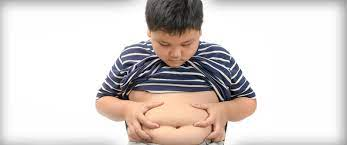Jaime Loza
April 19, 2022
Childhood Obesity
When I was in elementary school, in 6th grade, I was diagnosed with high cholesterol and was considered obese. I was fitting a size 34. I would say that my diet was poorly maintained and was having little physical activity at that time. The reason for the lack of activity had been due to several soccer injuries that had left me from playing soccer for about a year. After gaining nearly 50 pounds, my family and I decided to go to the doctor and see my health. After being told that I was obese and had high cholesterol, I decided to get back into sports and started watching my diet. The process took time. It wasn't until my freshman year of high school that I was back to normal.
Childhood Obesity has been an issue in the United States for several years, as it was for me. It is something that affects millions of children across the nation. The reason for childhood obesity nowadays could be due to a variety of different things. Some of them are due to socioeconomic status and others because of the recent incident of the pandemic. "A study of 432,302 children ages 2 to 19 years found the rate of body mass index (BMI) increased nearly doubled during the COVID-19 pandemic compared to the pre-pandemic period." (CDC, 2022).
Another reason why a child could suffer from childhood obesity would be due to the social-economic status positions of the family. Economically speaking, some families may not be able to buy adequate food that has sufficient nutrients for their family. Sometimes these foods and be more expensive than fast food. There are times when all the family could afford is fast food. In comparison to wealthier people, they seem to not go through childhood obesity as much. Socially speaking, "In 2011-2014, among children and adolescents aged 2-19 years, the prevalence of obesity decreased as the head of household's level of education increased." (CDC, 2021).
Centers for Disease Control and Prevention. (2021, April 5). Childhood obesity facts. Centers for Disease Control and Prevention. Retrieved April 19, 2022, from https://www.cdc.gov/obesity/data/childhood.html
Centers for Disease Control and Prevention. (2021, February 8). Products - health e stats - prevalence of overweight, obesity, and severe obesity among children and adolescents aged 2–19 years: United States, 1963–1965 through 2017–2018. Centers for Disease Control and Prevention. Retrieved April 19, 2022, from https://www.cdc.gov/nchs/data/hestat/obesity-child-17-18/obesity-child.htm
Centers for Disease Control and Prevention. (2022, February 18). Children, obesity, and covid-19. Centers for Disease Control and Prevention. Retrieved April 19, 2022, from https://www.cdc.gov/obesity/data/children-obesity-COVID-19.html
Deckelbaum, R. J., & Williams, C. L. (2001). Childhood obesity: The health issue. Obesity Research, 9(S11), 239–243. https://doi.org/10.1038/oby.2001.125






No comments:
Post a Comment